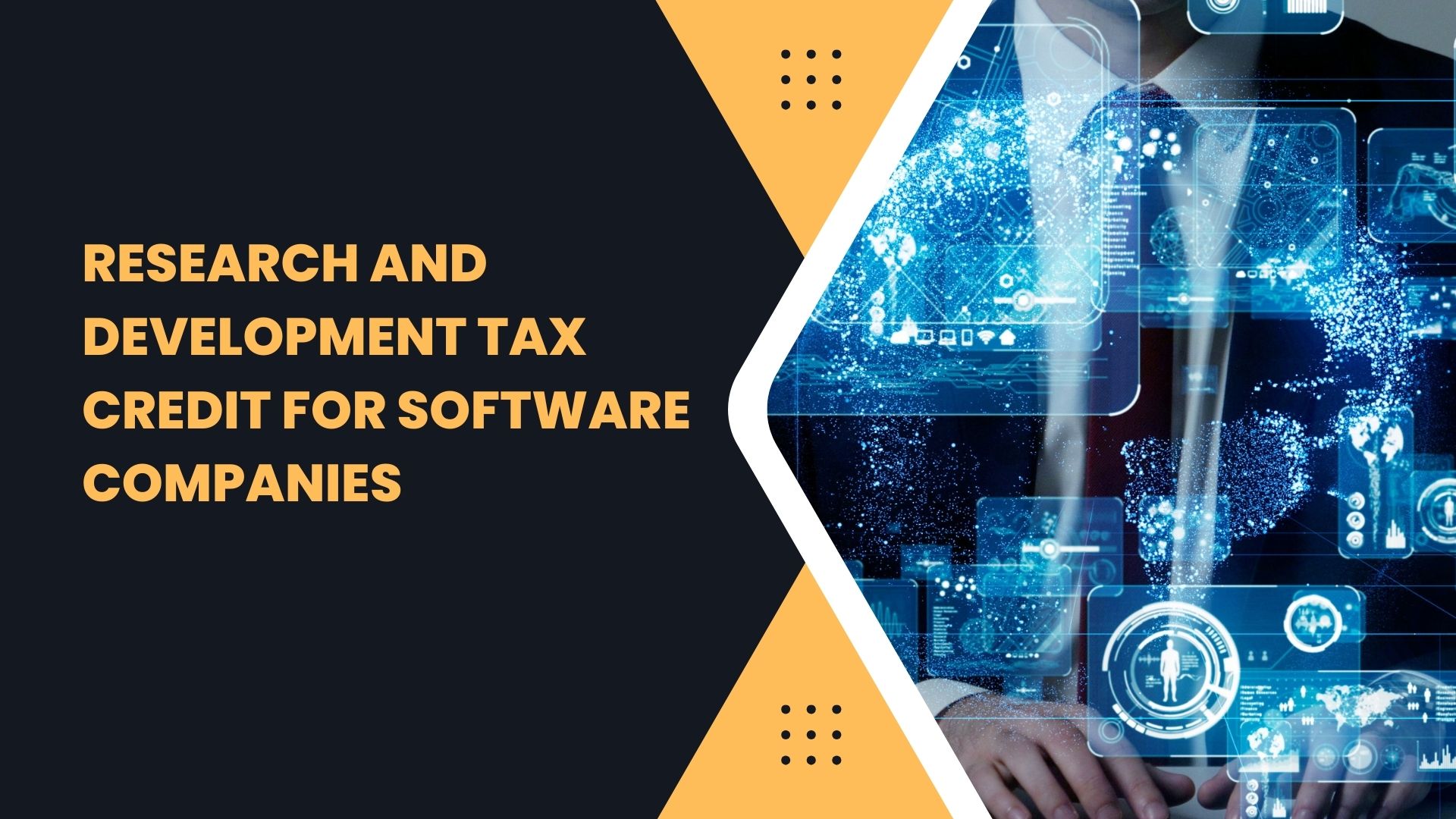The Research and Development (R&D) Tax Credit affords software companies significant financial benefits for their innovation activities. This incentive reduces a company’s tax liability for eligible research expenses.
Software companies across the globe are consistently pushing the boundaries of technology and innovation. To foster this continual advancement, many governments offer R&D Tax Credits as a form of economic encouragement. This tax relief is critical for software developers investing time and resources into new and improved technologies.
It can cover a range of expenses, including wages, supply costs, and third-party contractor fees incurred during the software development process. Eligibility for the credit hinges on the company’s research activities meeting specific criteria, such as the creation of new or improved functionality, performance, or reliability. This introduction to the R&D Tax Credit explains its significance as a catalyst for technological evolution within the software industry, making it a key area of focus for companies looking to maximize their investment in research and development.
Introduction To Research And Development Tax Credit
The Research and Development (R&D) Tax Credit serves as a significant fiscal incentive for software companies focused on innovation. Eligibility hinges on adhering to specific criteria, primarily centered around developing new or improved software products or processes. To qualify, activities must be technological in nature, aim to resolve uncertainty, and involve a process of experimentation.
Software companies can capitalize on this tax credit by evaluating their tasks against IRS Four-Part Test: permitting a potential reduction in federal and state tax liabilities. Recent legislative amendments have further refined the qualification parameters, broadening the spectrum of activities and expenses that can be claimed, thus reinforcing the incentive’s accessibility to a variety of software development ventures.
| Eligibility Factor | Details |
|---|---|
| Technological Basis | Projects must rely on principles of physical or biological sciences, engineering, or computer science. |
| Purpose | Activity aimed at creating new or enhancing existing software functions, performance, reliability, or quality. |
| Uncertainty Elimination | Activities intended to resolve technological uncertainties related to capability, method, or appropriate design. |
| Process of Experimentation | Systematic trial and error, modeling, simulation, or other methodologies to solve uncertainties. |

Credit: www.ctillc.com
Identifying Qualifying R&d Activities
Software companies often engage in various activities that may qualify for the Research and Development (R&D) Tax Credit. A primary qualifying activity is the development of new or improved software products. This can range from creating entirely new software solutions to enhancing existing ones, where the goal is to achieve technological advancement and increased functionality.
An eligible activity is also improvements made to software development processes. Efforts to innovate or streamline these processes could lead to more efficient methodologies, which may qualify for the tax credit. Companies that invest in software design and testing to assess functionality and performance are also engaging in qualifying R&D. Rigorous testing protocols to ensure reliability and efficiency align well with R&D tax credit criteria.
| Qualifying R&D Activities |
|---|
| Creation of new software applications |
| Enhancements to existing software features |
| Development of complex database management systems |
| Designing software architecture for improved performance |
| Formulation of new data analytics algorithms |
| Rigorous beta testing to evaluate software reliability |
Calculating And Claiming The R&d Tax Credit
Software companies seeking to leverage the Research and Development (R&D) Tax Credit must first identify their Qualified Research Expenses (QREs). QREs generally encompass wages, supplies, and contract research costs tied to eligible R&D activities. Precise identification and calculation are crucial, as these will directly impact the credit amount.
For startups, the credit may offset up to $250,000 against payroll taxes annually, whereas established companies can reduce their income tax liability. The credit calculation for established entities relies on a choice between the traditional and alternative simplified credit methods, with the latter growing in popularity due to its simpler approach.
Documenting R&D activities is paramount to ensure compliance with IRS guidelines. A comprehensive record should include project reports, development timelines, and expense breakdowns. When filing, software companies should meticulously assemble and review their documentation before submitting Form 6765 along with their tax return.
IRS compliance stipulates strict adherence to the tax code, and organizations are advised to seek guidance from tax professionals to navigate the complexities involved in the claiming process.

Credit: www.marcumllp.com
Strategies For Maximizing The R&d Tax Credit
Software companies aiming to enhance their financial position should focus on optimizing the identification of Qualified Research Expenses (QREs) to maximize the Research and Development (R&D) Tax Credit. A meticulous documentation process is key to identifying all eligible expenses, whether they stem from salaries, supplies, or third-party contractor costs associated with R&D.
Furthermore, companies can enhance their R&D Tax Credit benefits by leveraging state R&D incentives. As state provisions can differ significantly, a strategic approach tailored to the specific incentives of each state where the company operates is essential. Comprehensive knowledge of these incentives can result in substantial tax savings.
| Consultant Role | Benefits |
|---|---|
| Expert Analysis | Pinpointing all eligible R&D activities |
| Strategic Planning | Maximizing credit claims |
| Regulatory Compliance | Ensuring adherence to tax laws |
To further capitalize on the R&D Tax Credit, enlisting the expertise of R&D tax credit consultants is often beneficial. The right consultant brings a wealth of experience and can prove invaluable in navigating complex tax codes, thus optimizing credit returns.
Lastly, implementing a process of continuous assessment and yearly planning is imperative. Integrate the R&D Tax Credit strategy into routine business reviews to identify opportunities proactively and ensure ongoing compliance. Companies should address this critical task with the necessary diligence for optimal benefit realization.
Case Studies And Success Stories
Startups harnessing the R&D tax credit frequently fast-track their growth trajectory, with several young software companies reporting critical cash injections during their nascent stages. Real-world examples spotlight game-changing app developers and cloud-service innovators who, after careful documentation of their development processes, successfully claimed substantial credits, funneling those savings back into their businesses. This cycle spurred further innovation and hiring.
On the other side of the spectrum, established software firms utilize R&D credits to propel forward, investing in new technology stacks and advanced research initiatives. Notable industry leaders openly credit this incentive for enabling them to pursue bold, experimental projects which later evolved into flagship products, reinforcing their market positioning and driving industry standards upwards.
Within the realm of software development, companies must often traverse the complexities of audits and legal scrutiny regarding their R&D claim legitimacy. Success stories spread through the industry highlight the importance of meticulous record-keeping and proactively seeking expert guidance to preemptively address potential issues, thus ensuring a smoother audit process.
The influence of the R&D tax credit is immensely clear within the competitive landscape of software development. Companies leveraging such benefits are consistently at the forefront of innovation, oftentimes delivering breakthrough technologies that redefine user experience and accessibility, creating ripples of competitiveness across the global market.
Challenges And Considerations For Software Companies
Qualifying for R&D tax credits often presents a unique set of challenges for software companies. Misinterpretation of the tax code can lead to overlooking eligible activities or misclassifying development efforts, hindering the full potential of claims. Software development tasks such as beta testing, new product development, and process improvements may be eligible, yet are frequently underestimated.
Legislative changes, such as those in the PATH Act, have altered the landscape of tax credits, affecting software companies disproportionately. Staying abreast of these changes is critical to ensure eligibility and compliance. Forward-thinking companies must adjust their strategies to capitalize on evolving opportunities and navigate the complexities associated with these changes.
Companies aiming to optimize tax credits must strike a balance between R&D expansion and fiscal responsibility. Strategic planning is essential in aligning development projects with tax credit requirements, thus maximizing benefits while fostering innovation and growth within the software industry.
:max_bytes(150000):strip_icc()/taxcredit.asp-FINAL-edce780aaabe4340962361e124d95377.jpg)
Credit: www.investopedia.com
Frequently Asked Questions Of Research And Development Tax Credit For Software Companies
Does Software Qualify For R&d Tax Credit?
Yes, software development can qualify for the R&D tax credit if it meets specific innovation and research criteria. Eligible activities often include creating new software or improving existing ones.
What Industries Qualify For R&d Tax Credit?
The R&D tax credit is available across diverse industries, including but not limited to technology, pharmaceuticals, engineering, manufacturing, and software development. Qualification hinges on companies conducting research to create new or improved products or processes.
What Is Eligible For R&d Tax Credits?
Eligible R&D tax credits encompass expenses for developing new, improved products or processes. Qualifying activities must be technological in nature and aim to eliminate uncertainty through a process of experimentation.
What Companies Can Claim R&d?
Companies engaged in innovation, creating new products or improving existing ones, can claim Research and Development (R&D) tax incentives. Eligibility often extends to various sectors including tech, manufacturing, pharmaceuticals, and engineering.
Conclusion
Navigating the landscape of tax incentives can unlock significant savings for software companies. Embracing the Research and Development Tax Credit isn’t just savvy; it’s essential for fostering innovation and growth. By exploring eligibility and optimizing claims, tech enterprises can reinvest in their biggest asset: creativity.
Don’t miss out on this financial advantage – make R&D tax credits part of your strategic plan today.

Lydia Short is a distinguished figure in the realm of “how-to” business expertise, known for her insightful guidance on navigating the intricacies of entrepreneurship. With a comprehensive background in business strategy and management, Lydia Short has emerged as a go-to expert for practical advice on starting, growing, and optimizing businesses. Her career is defined by a commitment to demystifying the complexities of business operations and providing actionable insights to aspiring entrepreneurs. Whether elucidating effective marketing strategies, streamlining operational processes, or offering guidance on strategic decision-making, Lydia Short’s expertise encompasses a wide spectrum of business-related topics. As a “how-to” business expert, she serves as a valuable resource, empowering individuals with the knowledge and tools needed to turn entrepreneurial visions into successful ventures. Lydia Short’s contributions continue to shape the landscape of business education, making her a trusted mentor and advisor for those navigating the challenging yet rewarding journey of entrepreneurship.


